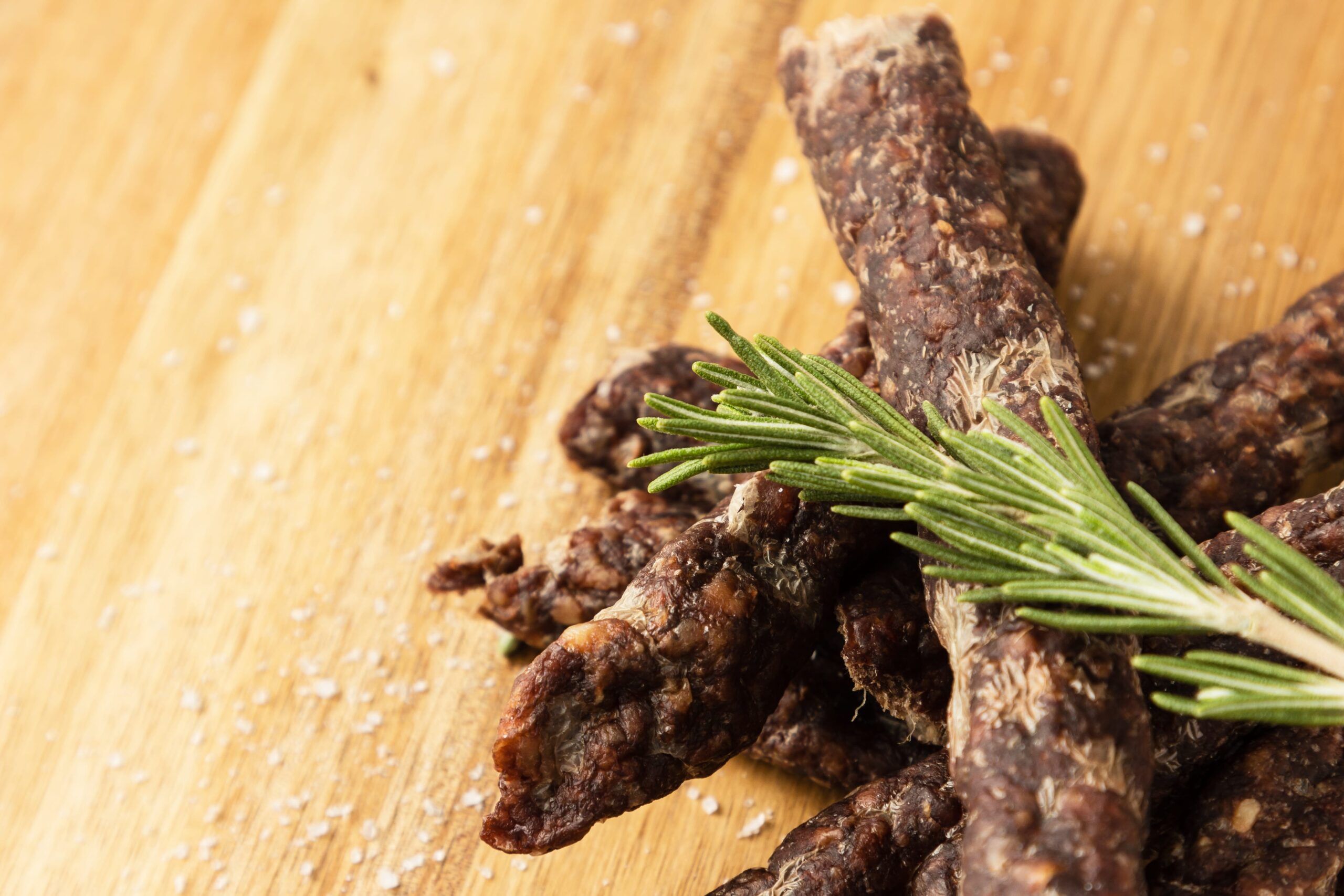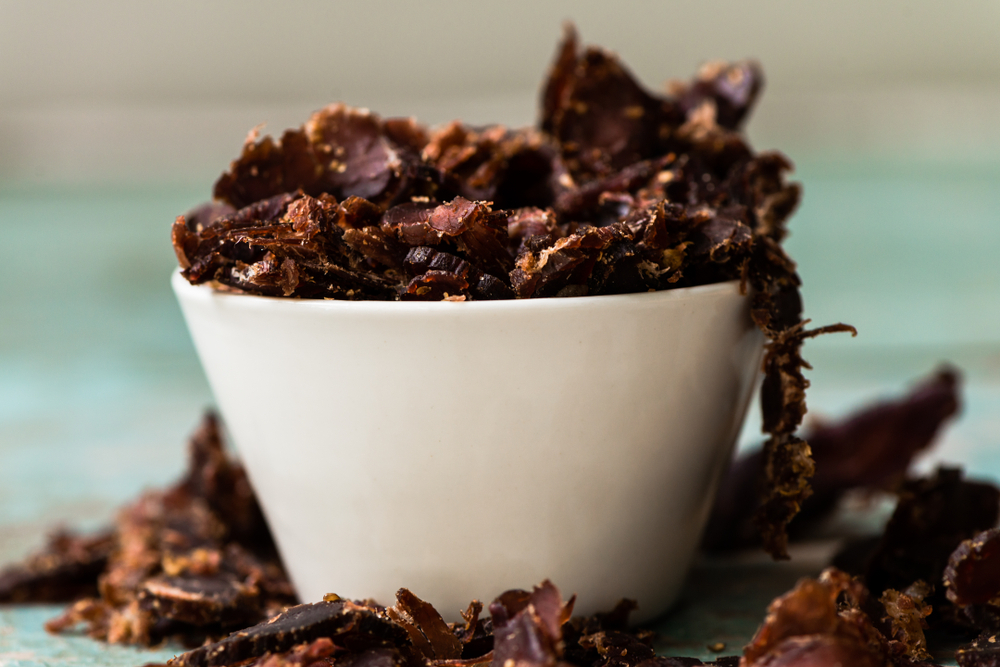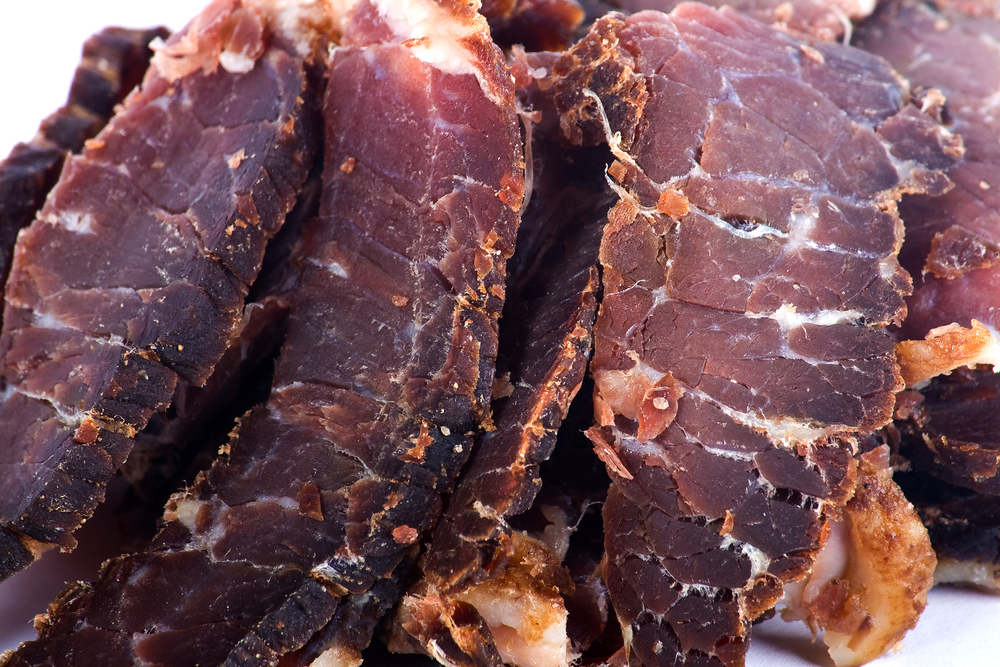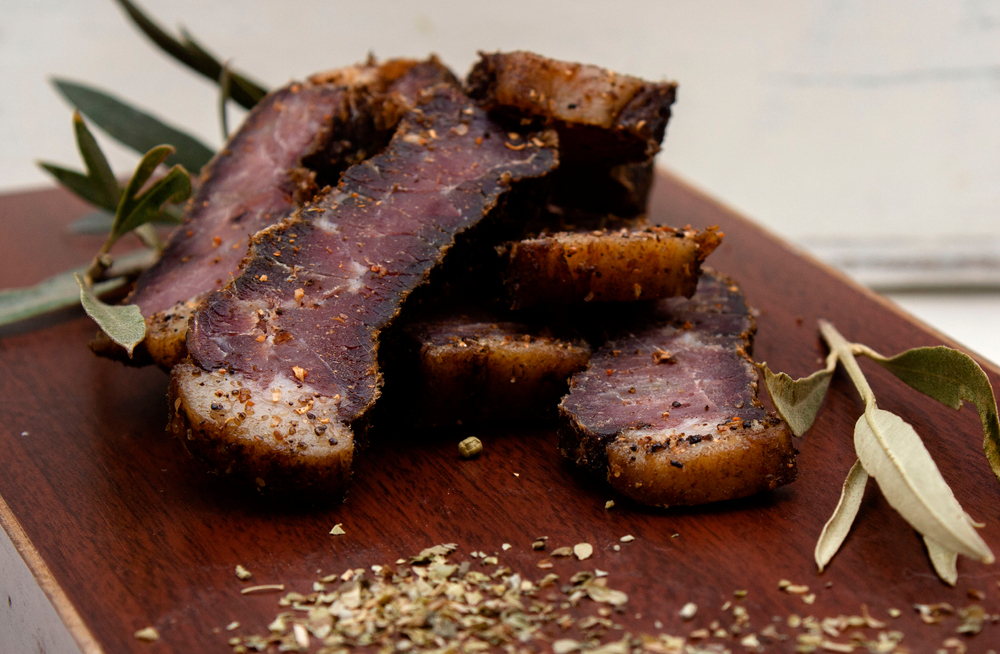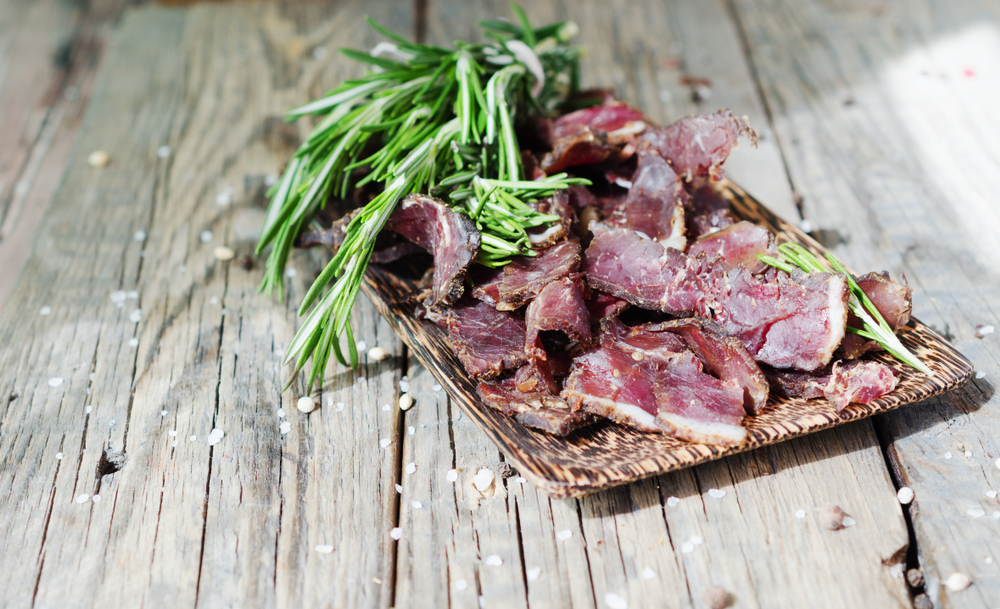Biltong is a form of air-dried meat, originated in South Africa. African communities have been making this delicious snack to preserve meat for hundreds of years.
The basic ingredients used in traditional biltong are:
- meat
- salt
- black pepper
- vinegar
- coriander
Historically, beef and ostrich have been the most common choices of biltong meat. However, any other meat can be used to make biltong, including fish, chicken, and pork.
As the best biltong in Perth production continues to grow, variations in the ingredients and flavours are expanding. Common add-ons include brown sugar, Worcestershire sauce, chilli peppers, garlic and onion powder, and other spices.
Currently, the majority of commercially produced biltong is made from beef. However, you may occasionally find venison, ostrich, and other game meat biltong from artisanal producers.
Biltong can be prepared with different types of meats
Traditionally, beef is used in biltong due to its availability. However, any type of red meat will do the trick. Pork, ostrich, game, turkey thigh meat, and pigeon breasts can be used to make biltong. Each type of meat provides a unique and delicious flavour.
The recipe uses a variety of incredibly flavorful ingredients
While the meat itself has its unique flavour, the process of making biltong involves adding other flavourful ingredients, such as salt, vinegar, and other spices. Black pepper, coriander, brown sugar, paprika, sea salt and garlic are used most commonly. It is never too salty and too acidic from the vinegar. With all the different flavours combined, it creates a unique and unforgettable taste.
Nutrients and potential benefits of biltong
Biltong’s surge in popularity is partly because of its favourable nutrient composition, which other common snacks lack.
Its low carbohydrate and high protein content make it an ideal fit for a number of diets. Biltong is known to be a rich source of iron, an essential nutrient that most people are lacking.
The nutrition profile of a 1 oz serving of beef biltong is:
- Calories: 80
- Carbs: 1 gram
- Fat: 2 grams
- Protein: 16 grams
- Sodium: 19% of the DV
- Iron: 35% of the daily value (DV)
Dried beef (biltong) also serves as a good source of several other nutrients like potassium, magnesium, and B vitamins.
Biltong is not the same as jerky
Biltong is often confused with jerky as they are both dried, meat-based snacks. The ingredients and preparation techniques are quite distinct, however.
Different processes of preparing the two snacks
Both biltong and jerky use dried meat, but the meats are dried differently.
Jerky is roasted or smoked for a few hours; in contrast, biltong is not cooked but wholly air-dried.
In fact, biltong is soaked in a mixture of salt and vinegar brine before hanging to air-dry. This aging and drying process can last for as long as 1 to 2 weeks before it is ready to serve.
If you are thinking of adding biltong to your snack diet, make sure you buy it from a quality biltong shop like Mufasa Biltong. Visit our website if you have further queries.

